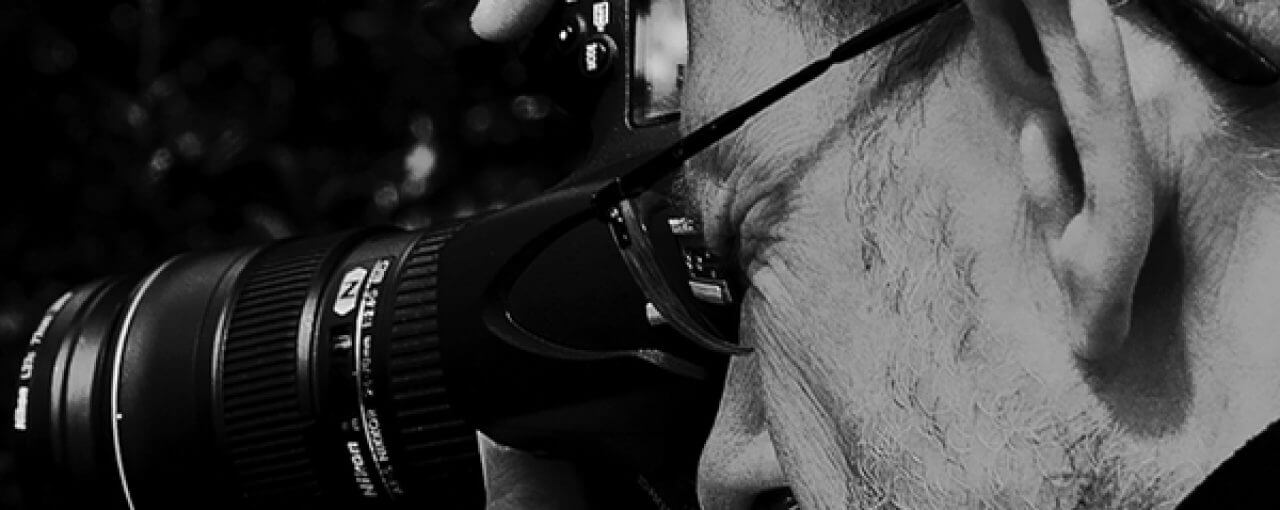Finding Beauty and Drama in Long Island
By Jennifer Nelson, WTP Feature Writer
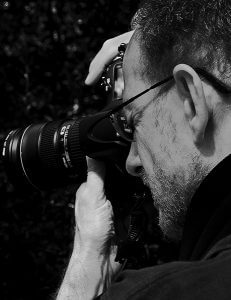
David Quinn is a self-taught photographer in Setauket, New York, who became interested in photography in his early fifties. He focuses mainly on creating landscape, flower, and nature images with an occasional venture into street and architectural pictures. In his artwork, he strives to evoke an emotion, raise an uncertainty, or create a sense of movement by either isolating key elements or blurring the subject matter. He has had exhibits at the Long Island Arts Council at Freeport and Huntington Arts Council. In 2014, the online magazine BWGallerist identified him as one of the best emerging black-and-white fine art photographers. See his work in WTP Vol. VI #6.
Nelson: You’re a self-taught artist who became interested in photography in your fifties. How did you come to focus on this as an art form?
Quinn: I’ve always had a deep appreciation for nature, and in my early fifties, I found I had more time on my hands to spend on individual pursuits. So, I slowly rekindled an interest in nature photography that I had developed in my mid-twenties and began venturing out early weekend mornings to explore the harbors, parks, and woodlands in my area. At first, I was merely content to take causal snapshots of whatever I found interesting. After a while, I realized that these early images lacked the artistry of the photographs found in nature books, and I began to study both the technique and aesthetics of photography in general.
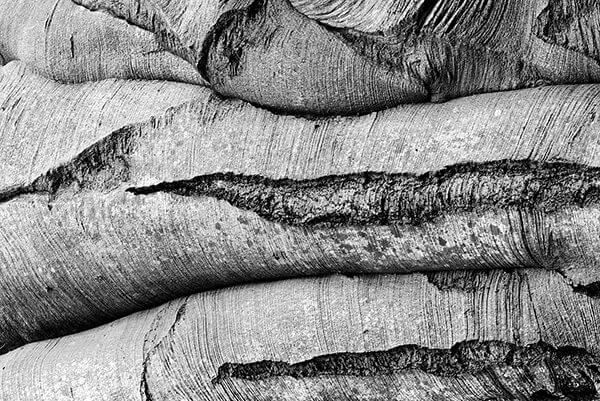
Through practice and experimentation, I found my work improving and, as it did, I began to enter juried shows in order to share my work with jurors and to find out what they thought of my images. Entering juried shows has taught me to be more critical of my images and to reflect on the meanings that I wish to convey. It has helped me to refine my relationship with nature and to develop my own artistic style.
Nelson: Most of your work is created on Long Island, not far from where you live in Setauket. What interests you most about this region, and how much has it influenced your work?
Quinn: I love the quiet beauty of this area with its intimate landscapes, seascapes, and woods. I’ve been told that Long Island lacks the scenic grandeur of other regions of our country and that nature photographers who concentrate on local subjects are at a disadvantage with artists living in other areas. Personally, I find this so-called limitation liberating as it encourages me to look for the more prevalent visual dramas that are found everywhere. I feel fortunate to be able to discover astonishing beauty and drama in my own backyard and community. As a fine art photographer, you always face the challenge of creating something unique, whether you are in your hometown or standing at the rim of the Grand Canyon.
Nelson: You describe your work as “impressionistic.” Can you talk about that?
Quinn: By “impressionistic,” I mean that I strive to create images that have more to do with conveying thoughts, feelings, and sensations than with depicting an “objective reality.” My goal is to share an experience that I find captivating and to encourage the viewer to pause and reflect on a visual drama in our world. My decision whether to create a photograph or not depends on the level of excitement present at first glance. The challenge is how best to depict my experience through the medium of photography. As a result, many of my images are either blurred or show only a fragment of a flower, tree, or object. The question “Is the depiction accurate or abstract?” is unimportant as each of my photographs is a representation of a reality experienced. If I am successful, then the viewer will have similar thoughts, feelings, and sensations to mine.
Nelson: Your series Against the Elements documents a rare maritime dwarf beech forest of trees. How did you come to photograph this forest, and why in black and white?
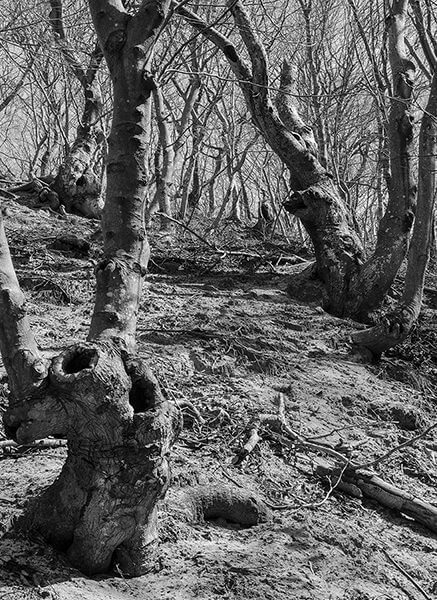
Quinn: Many of my long-term projects are initiated as the result of happenstance or serendipity, rather than a well-conceived plan. Such is the case with Against the Elements. I was visiting a local private sanctuary and I happened to mention to the owner that I was very involved in photographing dead and dying eastern red cedar trees in All that Remains because of their sculptural forms. He mentioned that maritime dwarf beech trees often have otherworldly shapes and that I might be interested in seeing them. He told me their whereabouts, and I made a quick hike that day and was amazed at what I saw.
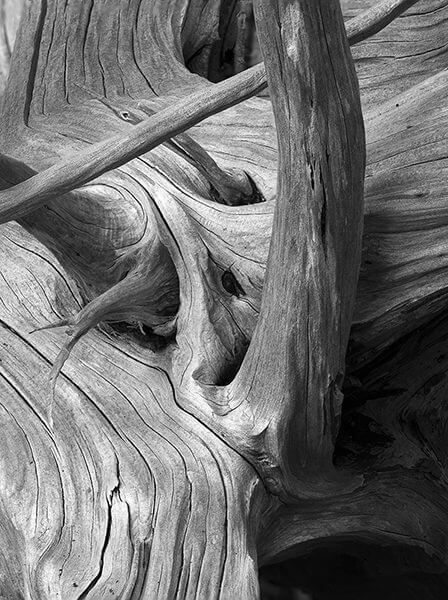
Over the years, I have visited these remarkable trees many times. There are two reasons why I chose to depict these trees in black and white. First of all, the lighting conditions and relatively drab colors of the forest produce far better monochrome images from a technical perspective. More importantly, the trees’ fantastic forms are better appreciated by the abstraction caused by the absence of color. Color images of the trees feel more “real” and ordinary, and this is the opposite effect of what I want to convey.
Nelson: In the series Hidden Beauty, you take close-up pictures of the reverse side of petals, and the receptacles, sepals, and stalks that protect them. Can you talk about how you came to this different perspective?
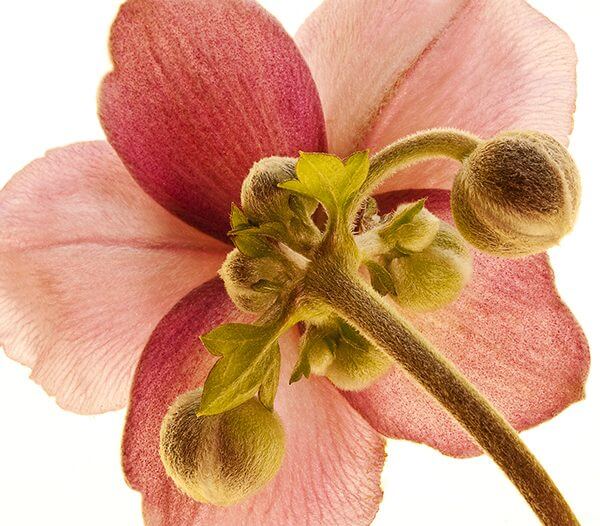
Quinn: As mentioned above, I often initially find my ”muse” through chance rather than a conscious decision. Flowers are by far the most widely photographed of plants and it can be difficult to capture their essence in a fresh or new manner. For a quite a while, I was content to produce images from a more traditional perspective—either entire blossoms or close-ups of the pistils and stamens (the reproductive parts). Gradually, I found myself increasingly photographing the less visible parts of the flowers and discovered that I was drawn to this more nuanced beauty. This new perspective gave me a deeper appreciation for the complexity of flowers and their natural design.
Nelson: Your Abstract series features colorful images that remind me of flowers, trees, and lakes. How did you transition into the more abstract and what techniques did you use?
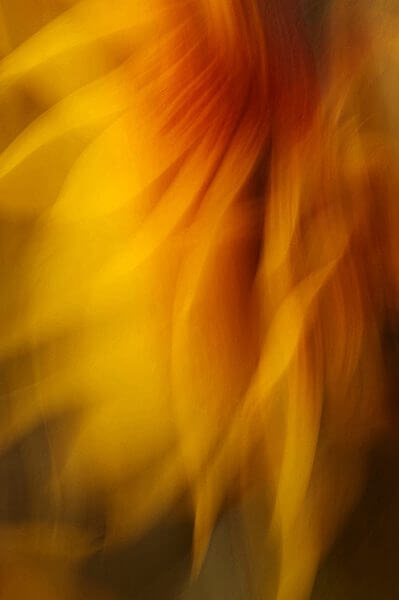
Quinn: In the beginning, I strove to take realistic photos of flowers and landscapes. Most of the flower images were taken in my garden where even the slightest breeze could produce a blurred image, and to my mind, an unacceptable photo. To combat the breezes, I often staked the flowers and even used a special plant clamp designed for this purpose. One day, frustrated with these precautions, I decided to try to work with the breezes and create painterly images of flowers. Using slower shutter speeds, I had some modest success, and yet many of the images straddled the line between realism and abstraction and didn’t adequately convey the impressionistic beauty of the wavering, dancing flowers. I began to move my camera as I took the pictures and was more pleased with the results.
After this success, it occurred to me to try the same technique photographing landscapes. Up to this point, I was always very concerned with getting the sharpest possible landscape images using a tripod and shutter release in order to avoid even the slightest camera movement. Using slower shutter speeds, I experimented swiveling my camera on the tripod. To me, these images capture the beauty of our natural world by obscuring the day-to-day details of certain vistas concentrating on the essence of form, color, and light. These impressionistic works are similar to the images we remember as we awake from our dreams.
Nelson: The series Cars doesn’t involve taking photos of nature. What led you to attend automobile shows and take black-and-white photos of domestic and international cars using available light?
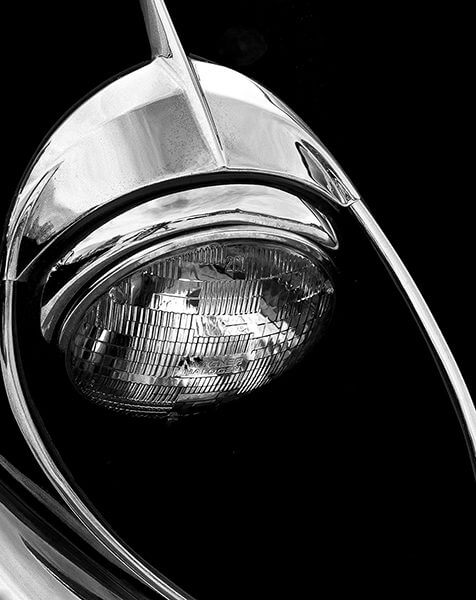
Quinn: A neighbor has a beautiful black-and-white 1957 Chevy Belair and I used to enjoy seeing it parked in his driveway. One day, I asked if I could photograph it and the next day, he pulled it out of his garage and that sparked my interest in photographing cars. I’ve always had a thing for British sports cars, especially Jaguar XKEs, and older American cars. Creating black-and-white close-ups of these cars highlights their exquisite form and design. In many ways, these car images are similar to the photos in my Woodland Intimacy project—in essence, both are figurative studies. I prefer using existing light as it adds the element of chance just as it does in my nature photography.
Nelson: What photographers and artists inspire you, and why?
Quinn: There are countless photographers that inspire me with their work; however, if I had to name a few, it would be the following: I have always admired the work of Eliot Porter the renowned color artist, who created subtle, beautiful works emphasizing intimate landscapes, rather than grand vistas. His work teaches you to look for beauty everyday and all around you. William Neill is a wonderful, contemporary artist who brings a quiet spirituality to nature photography and has a keen eye for nature’s design. Finally, the sheer beauty of Brett Weston’s black-and-white images are a stunning reminder that often less is more and that monochrome images are often more powerful in capturing natural forms and textures than color.
Nelson: How do you see your work evolving in the future?
Quinn: Honestly, I can’t say as most of my major work has been unplanned. Although I primarily view myself as a nature photographer, I find myself attracted to visual dramas involving buildings, man-made objects, and people. Given my past work, I think my guiding principle will always be to follow my instincts regarding subjects and themes that I find captivating and to discover the best ways to share these images with others. To me, a photograph has so much more value when it is seen by others.
Copyright 2018 Woven Tale Press LLC. All Rights Reserved.

